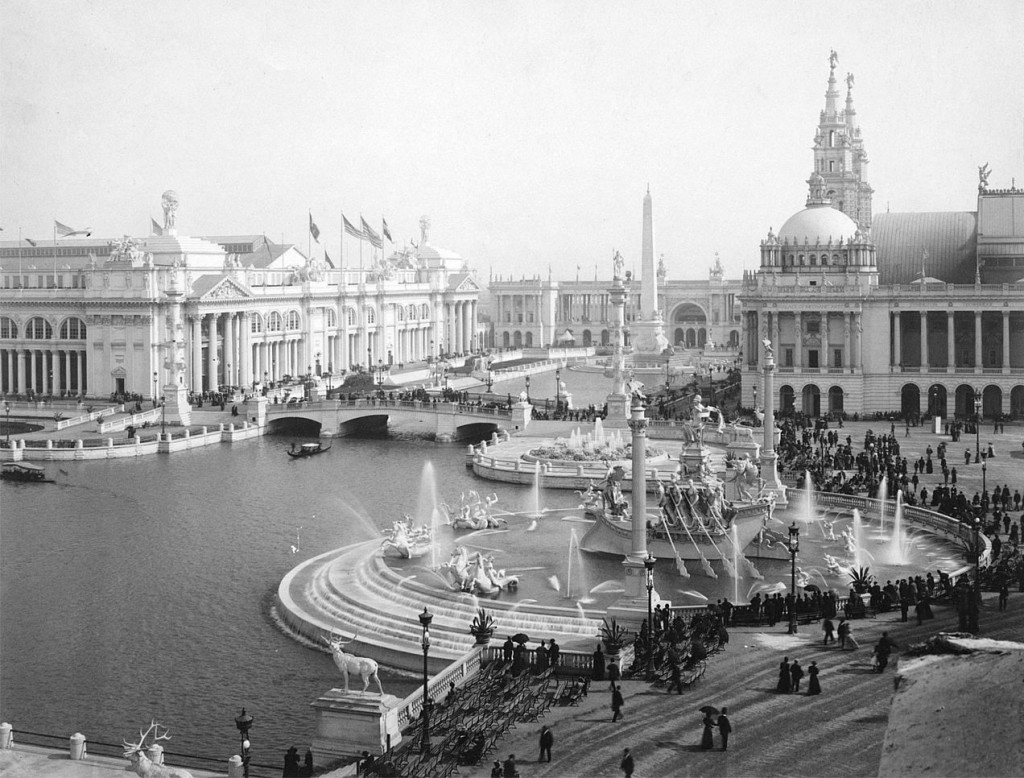To celebrate the 400th anniversary of Columbus’s “discovery” of the Americas, civic and business leaders planned a world’s fair in Chicago. The fair opened in 1893, and it drew people from around the world. Some people came eagerly; others were brought to the fair for the purpose of being put on display as part of an exhibition of the peoples of the world. American fairgoers had the opportunity to view representations of cultures completely foreign to them, but just as importantly, they had the opportunity to celebrate the growing ingenuity of the United States. New inventions, from zippers to room-size engines, wowed visitors, as did new treats such as Cracker Jacks. (In fact, it was at this fair that Pabst beer won its blue ribbon and became Pabst Blue Ribbon.)
Our text for understanding the fair is The Devil in the White City, which tells the story not only of the construction of the fair’s signature buildings and amusements, but also of a serial killer—often touted as the nation’s first—who set up shop on the edge of the fair.
As we read these two intertwined stories—of the Columbian Exposition and H. H. Holmes—you’ll find the fair was a place of contradictions, of extreme glory and horrifying misery. Last week, you all did an excellent job of defining engineering to include not only civil engineering but also cultural engineering—and some of you explained how these two kinds of engineering intersect and influence one another. As you learn about the fair, think about how the people planning the fair engineered the way they wanted Chicago and the United States to be perceived by the world, but also the ways they engineered the fair to denigrate cultures other than their own. Think about how they used the hard math and science that underlies civil engineering to engineer both intellectual and emotional experiences for fairgoers.
I selected The Devil in the White City with you in mind. It’s historical, but it reads in many ways like a novel. I hope you enjoy it as much as I have.
